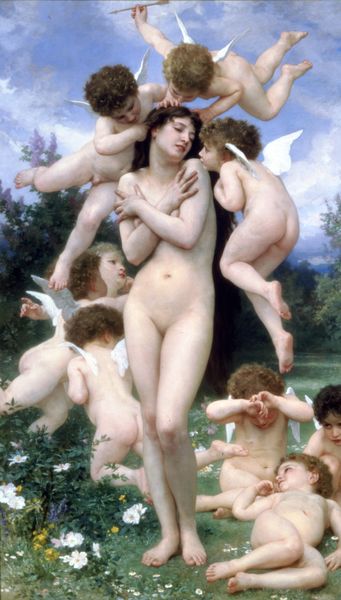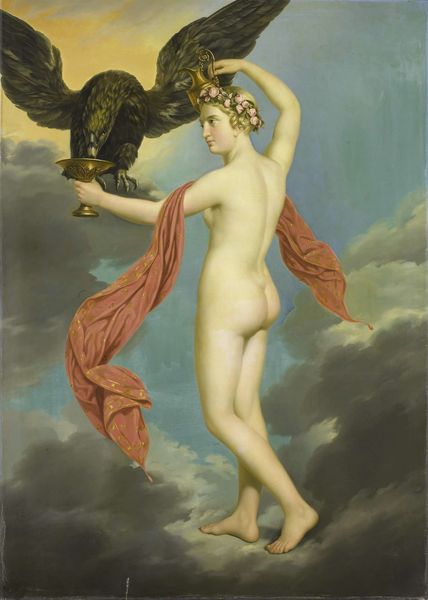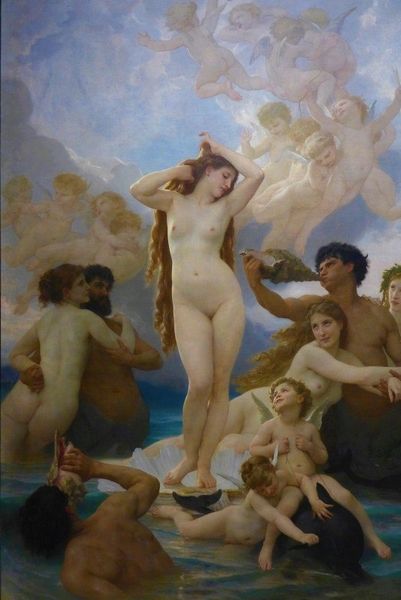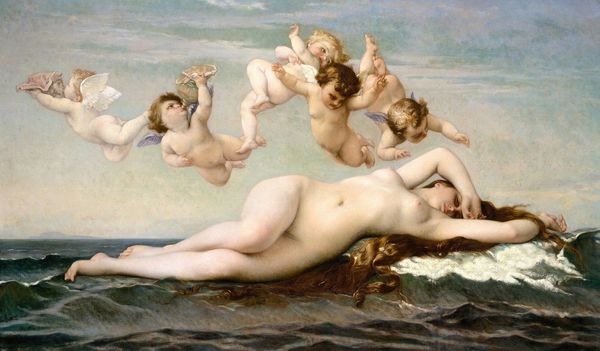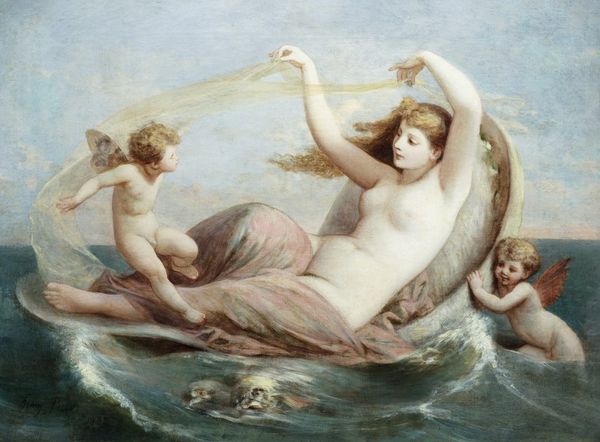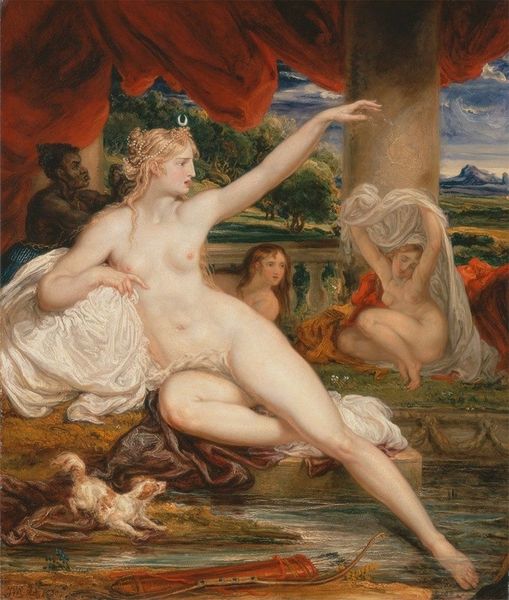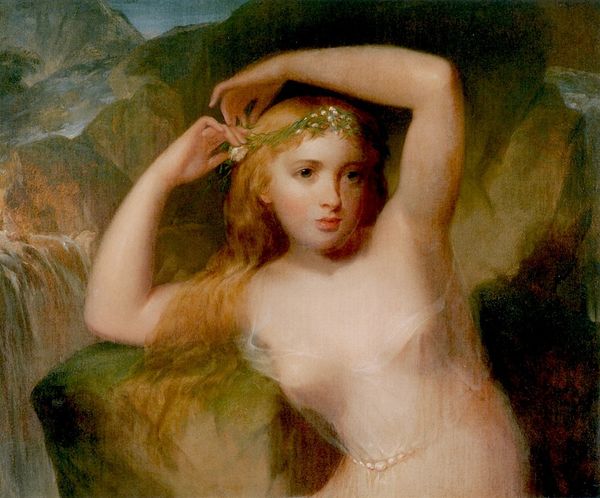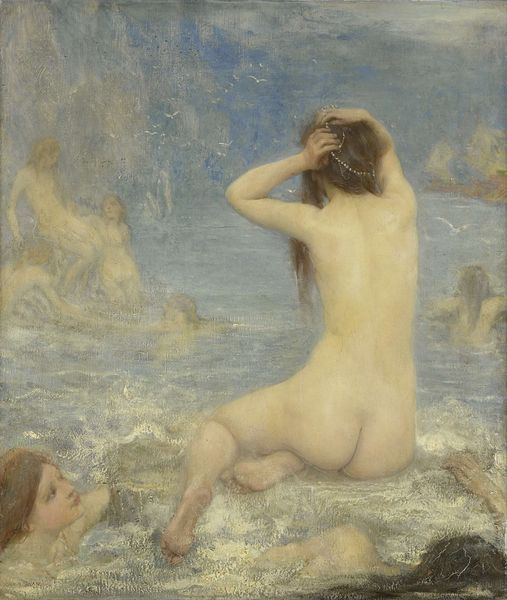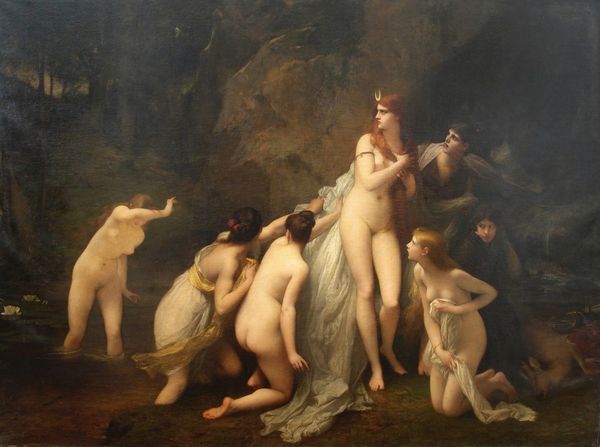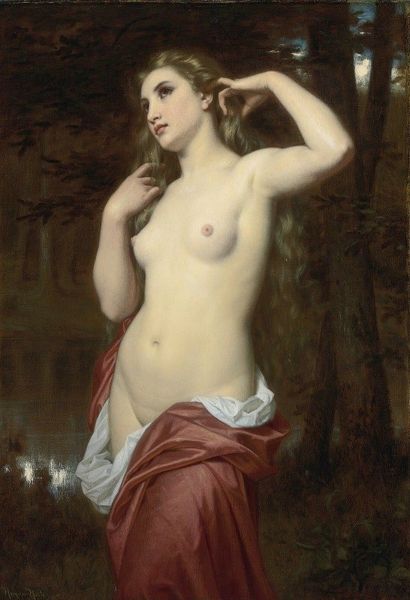
painting, oil-paint
#
portrait
#
neoclacissism
#
allegory
#
painting
#
oil-paint
#
classical-realism
#
figuration
#
oil painting
#
roman-mythology
#
romanticism
#
mythology
#
history-painting
#
nude
Dimensions: 163 x 92 cm
Copyright: Public domain
Jean Auguste Dominique Ingres made this painting of Venus, the Roman goddess of love, in the 19th century, using oil paint on canvas. Ingres’s command of this medium is plain to see. Note how the material of the oil paint influences the appearance of the work, lending a smooth, almost porcelain-like finish to Venus’s skin. The painting’s laborious process involved mixing pigments with oil and carefully layering them to achieve the desired effect, building up color and form in meticulous detail, with glazes to create luminosity. This technique required a deep understanding of color theory, the chemistry of pigments, and skillful brushwork. The canvas support also required complex preparation, with layers of gesso to ensure a smooth surface. Consider the amount of labor and artistry embedded in this type of production. By focusing on such aspects as material and making, we can come to a fuller understanding of the artwork that challenges any distinction between fine art and craft.
Comments
No comments
Be the first to comment and join the conversation on the ultimate creative platform.
